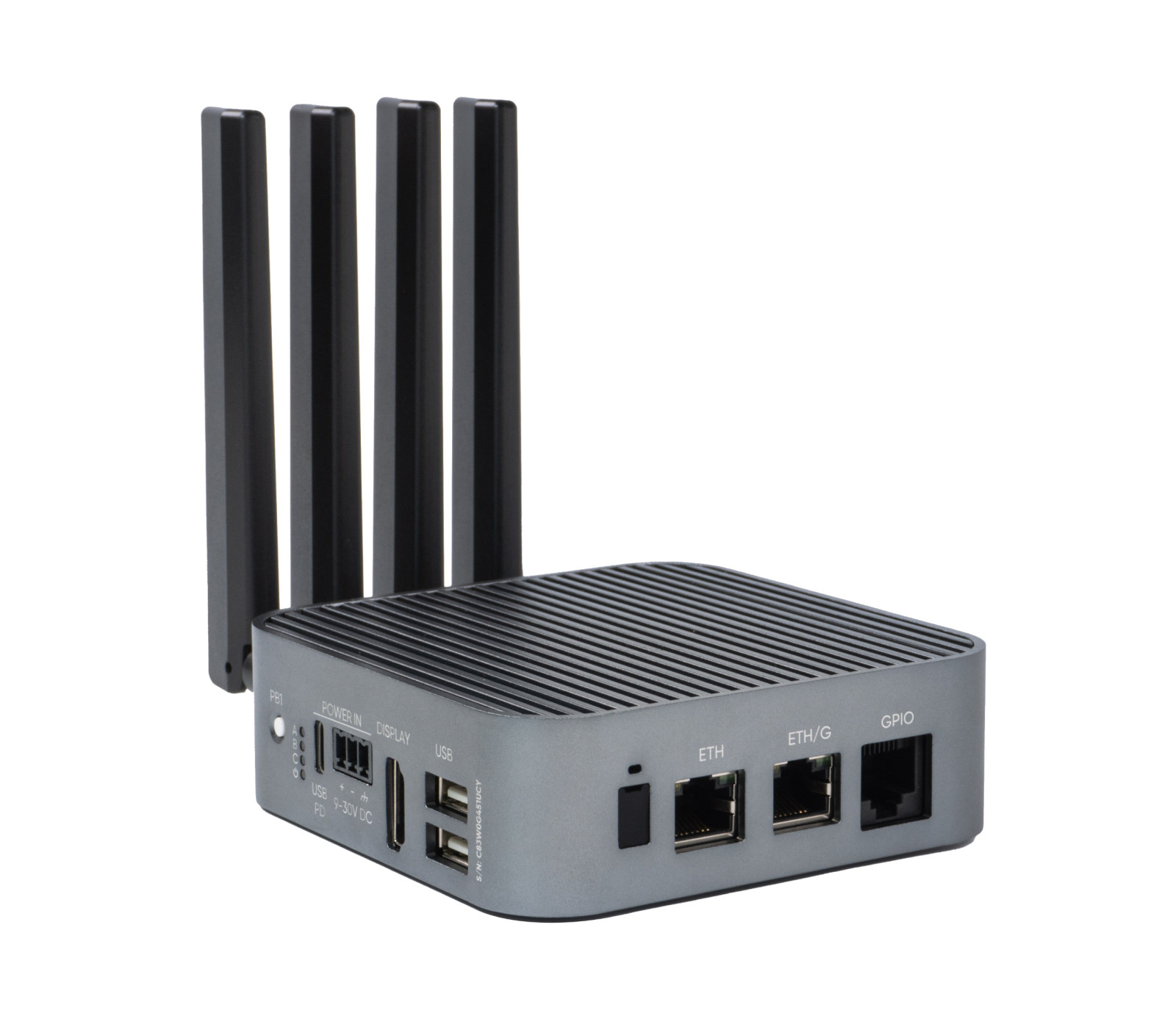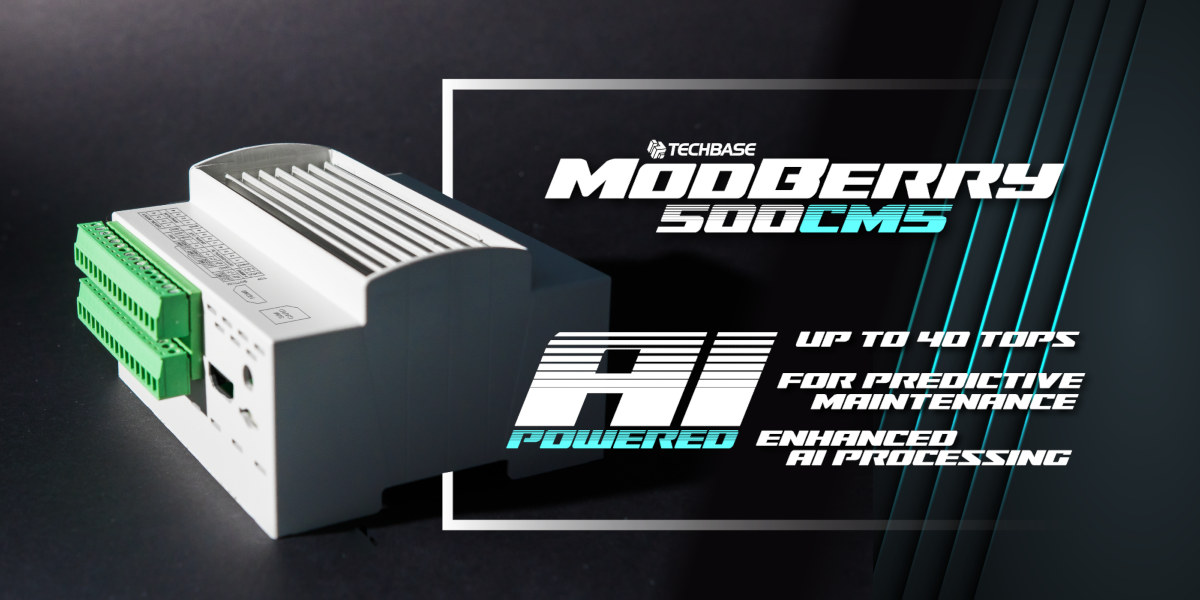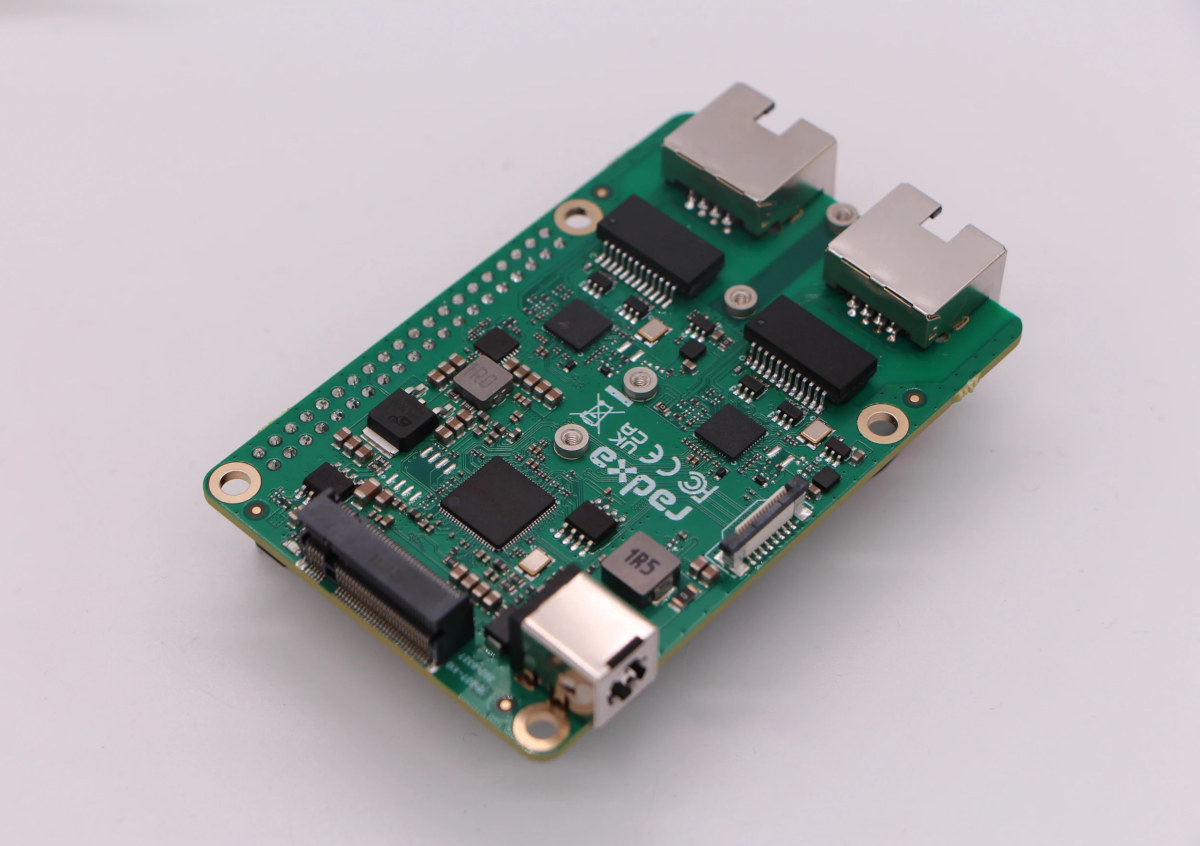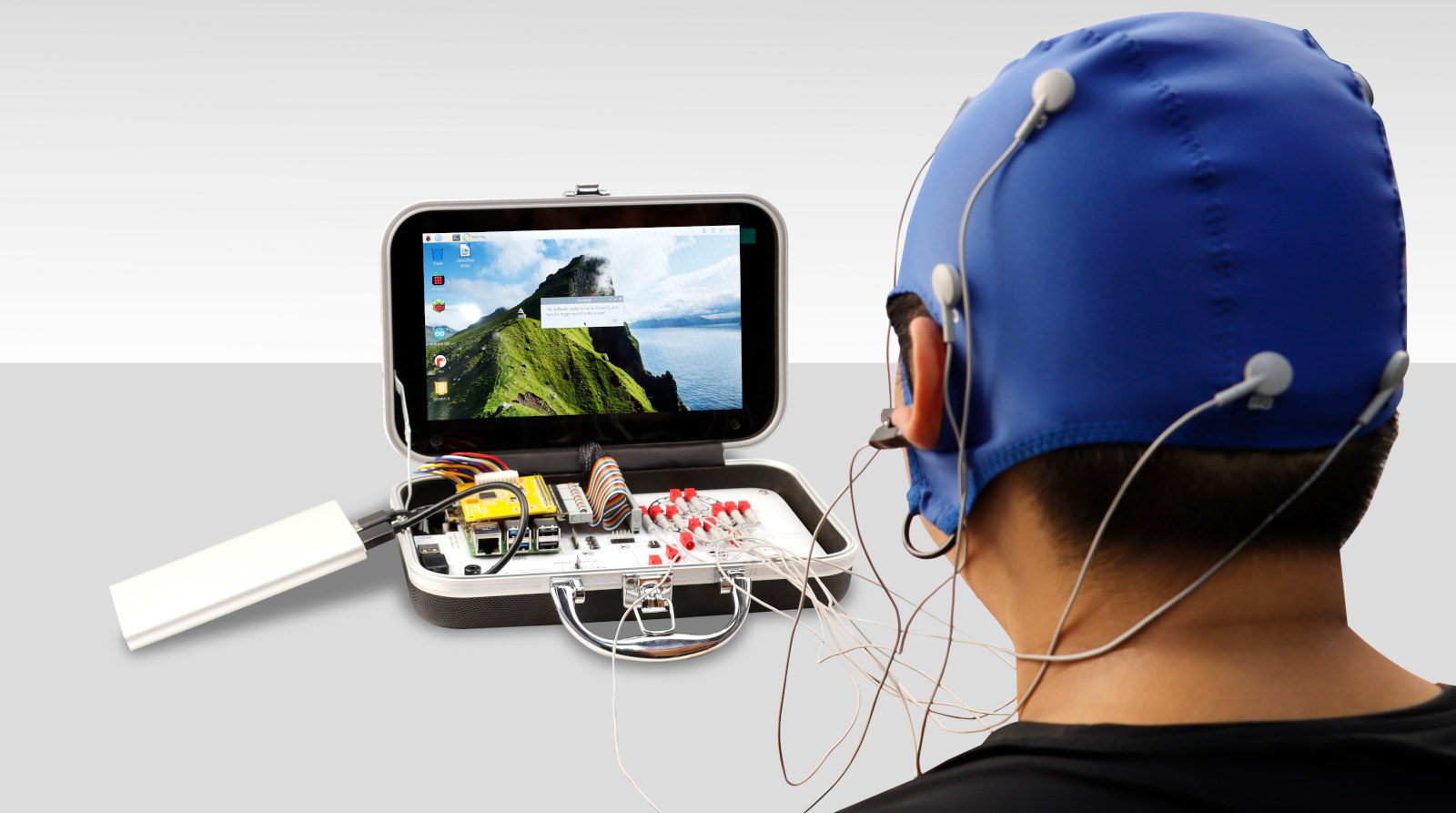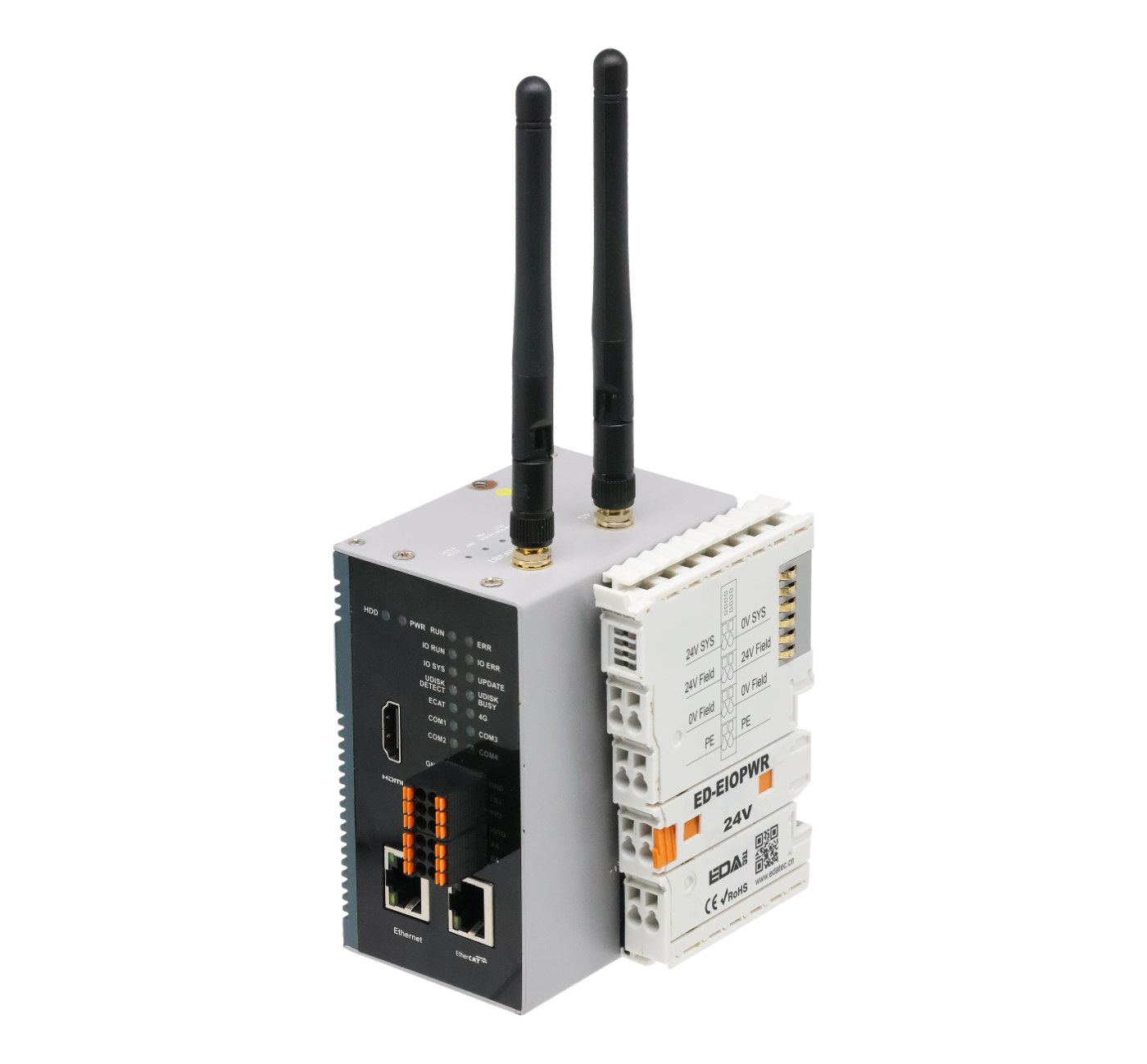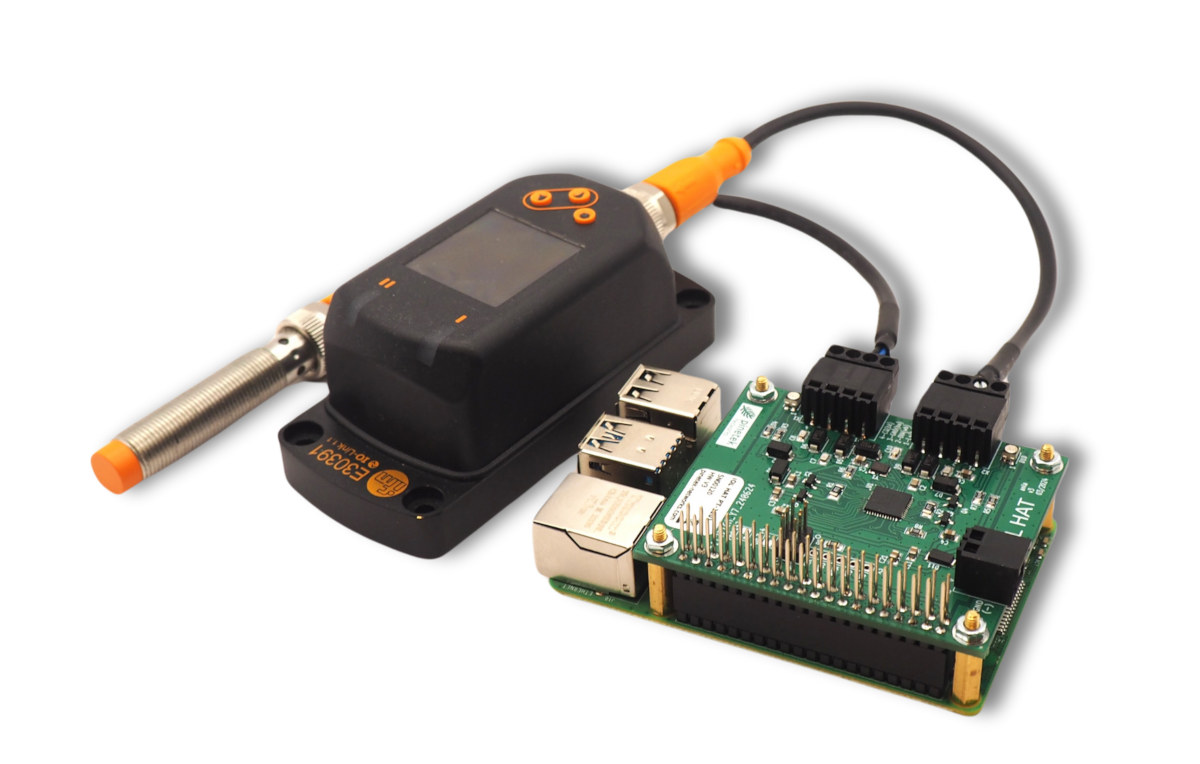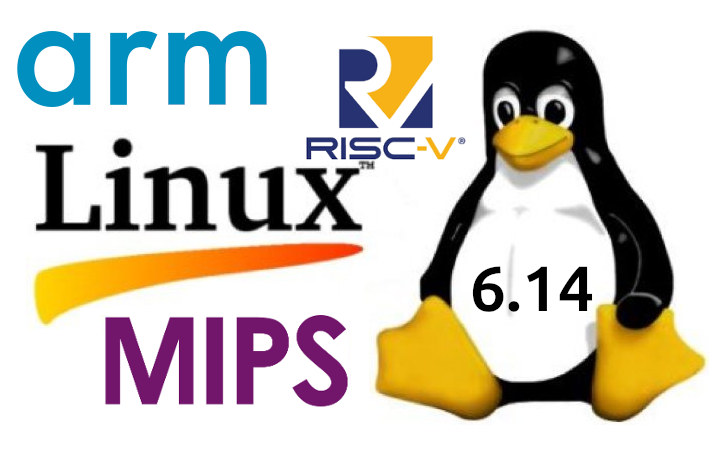Waveshare CM5-DUAL-ETH-MINI-BOX is a dual gigabit Ethernet router box designed for the Raspberry Pi CM5. It offers a familiar design with a metal enclosure that looks suspiciously similar to FriendlyELEC’s family of NanoPi routers powered by Rockchip processors, such as the NanoPi R2S Plus or NanoPi R3S. The router also features a microSD card slot to boot the OS on the Raspberry Pi CM5 Lite, a USB 3.0 Type-A port, a USB Type-C port for power and eMMC flash programming, power and boot buttons, and a 40-pin GPIO header accessible without opening the case (after lifting a cover). CM5-DUAL-ETH-MINI-BOX specifications: Supported SoMs – Raspberry Pi CM5 and CM5 Lite, and potentially compatible alternatives like the Raspberry Pi CM4, Orange Pi CM5, Radxa CM5, etc… Networking 2x Gigabit Ethernet RJ45 ports: one GbE exposed directly through the CM5 board-to-board connector, and the other via a RealTek RTL8111H PCIe controller WiFi 5 […]
ALPON X4 – A Raspberry Pi CM4 fanless Edge Computer with 4G LTE cellular connectivity
SixFab ALPON X4 is yet another fanless Raspberry Pi CM4-powered edge computer whose main selling point is built-in 4G LTE cellular connectivity with an eSIM, besides two Ethernet ports, and dual-band WiFi 5 and Bluetooth 5.0 on the system-on-module. The edge computer ships with 8GB RAM and 32GB eMMC flash by default, but another Raspberry Pi CM4 can be used upon request. Other ports include HDMI video output, two USB 2.0 ports, and an RJ11 jack for GPIO expansion. The system supports three power options: USB PD, a 9V to 30V DC input terminal block, or PoE. ALPON X4 specifications: SoM – Raspberry Pi CM4 SoC – Broadcom BCM2711 CPU – Quad-core Cortex-A72 SoC @ 1.5GHz GPU – VideoCore VI with support for OpenGL ES 3.1 and Vulkan 1.0 VPU Decode – H.265/HEVC up to 4Kp60, H.264 up to 1080p60 Encode – H.264 up to 1080p30 Memory – 8GB LPDDR4-3200 […]
Harnessing the Power of AI in Industrial Automation (Sponsored)
The industrial IoT (IIoT) landscape is undergoing a transformative shift, driven by advancements in artificial intelligence (AI). Among the frontrunners of this revolution is the ModBerry 500 CM5, a cutting-edge IoT platform enhanced by optional AI modules like the Hailo-8L and Geniatech AIM-M2. With the integration of these modules, the ModBerry 500 CM5 becomes a powerhouse for industrial automation, offering unparalleled performance and scalability. Let’s dive into the exciting capabilities of this innovative combination and explore the current and future applications of AI in IIoT. ModBerry 500 CM5: The Core of Smart Industrial Automation At the heart of the ModBerry 500 CM5 is the powerful Raspberry Pi Compute Module 5, featuring a quad-core Cortex-A76 processor and support for up to 16GB of RAM. When paired with AI acceleration modules like the Hailo-8L and Geniatech AIM-M2, the ModBerry 500 CM5 evolves from an IoT hub into a sophisticated AI-enabled system capable […]
Radxa Dual 2.5G Router HAT adds 2.5GbE networking and M.2 NVMe storage support to Raspberry Pi 5-compatible SBCs
The Radxa Dual 2.5G Router HAT is an expansion board adding 2.5GbE networking and an M.2 PCIe x1 socket for NVMe SSD storage to the Raspberry Pi 5 and compatible SBCs with a PCIe FFC connector. We had previously seen Raspberry Pi 5 HATs with 2.5GbE such as the Pineberry HatNET! 2.5G, or even one with 2.5GbE and NVMe SSD (52Pi W01 U2500 HAT), but the Radxa Dual 2.5G Router HAT is the first to implement two 2.5 Gbps Ethernet ports to enable routing, and also features an NVMe SSD as a bonus. Radxa Dual 2.5G Router HAT specifications: Supported SBCs – Raspberry Pi 5, Radxa ROCK 2F, Radxa ROCK 2A, Radxa ROCK 5C, the upcoming Radxa 4D (RK3576), and potentially others PCIe Switch – ASM2806 PCIe 3.0 switch chip with PCIe Gen3 x2 upstream and four PCIe 3.1 lanes downstream up to 8GT/s Storage – 1x M.2 M-Key socket […]
PiEEG kit – A Raspberry Pi 5-based bioscience lab in a suitcase (Crowdfunding)
Yesterday we wrote about using quantum sensors for brain-computer interfaces (BCI) and other biomedical applications. But that’s the future, and if you want to experiment with brain-computer interface technology and bioscience, the PiEEG kit has everything you need to get started, with all components fitting in a suitcase easy to carry around between your home and university or school. The bioscience home lab is based on the PIEEG Shield for Raspberry Pi introduced in 2023, and features a Raspberry Pi 5 8GB, a 9-inch display, a sensor board, EEG electrodes and cables for brainwave measurement, and electrodes for EMG (muscles), EKG (heart), and EOG (eye) signal recording. The PiEEG kit is comprised of the two main custom boards with the following specifications/features: PiEEG Shield on top of the Raspberry Pi 5 ADC – Texas Instruments ADS1299 Analog-to-Digital Converter for biopotential measurements Host interface – 40-pin GPIO header with SPI protocol […]
Raspberry Pi CM4-powered CODESYS industrial controller supports EtherCAT, Modbus, up to 32 I/O modules
EDATEC ED-PLC2010 is an industrial controller powered by a Raspberry Pi CM4, supporting EtherCAT and Modbus interfaces, up to 32 I/O modules, and preloaded with CODESYS runtime for real-time core and visualization capabilities. DIN Rain-mountable Raspberry Pi CM4 industrial controllers are not exactly new, with products such as Modberry 500 CM4 and Edgebox-RPI4 announced shortly after the launch of the Raspberry Pi Compute Module 4 in 2020. More recently (2024), Seeed Studio introduced the reComputer R1113-10 IoT gateway, and Sfera Labs launched the Strato Pi Max. TECHBASE also upgraded the Modberry 500 with a more powerful CM5 module. EDATEC ED-PL2010 mostly differentiates itself by shipping with a licensed version of CODESYS runtime for industrial automation. It’s also possible with other vendors, but the license might need to be purchased separatly. EDATEC ED-PLC2010 specifications: SoM – Raspberry Pi CM4 SoC – Broadcom BCM2711 CPU – Quad-core Cortex-A72 SoC @ 1.5GHz GPU […]
IOL HAT adds an IO-Link compatible master to Raspberry Pi for industrial IoT sensors and actuators
Pinetek Networks’ IOL HAT is a Raspberry Pi expansion board using the IO-Link (IEC 61131-9) protocol to interact with industrial sensors. It’s based on the Analog Devices MAX14819 IO-Link master transceiver and offers two SDCI (“Single-Drop Digital Communication”) connectors. While work on the IO-Link communication protocol started in 2006, and the IEC 61131-9 “Single-drop digital communication interface (SDCI) for small sensors and actuators” standard was adopted in 2013, it only recently came onto our radar with products like the STMicro EVLIOL4LSV1 IO-Link actuator board and Renesas CCE4511 IO-Link master and ZSSC3286 IO-Link sensor signal conditioner. The IOL HAT brings the IO-Link standard for industrial IoT communication to the Raspberry Pi. IOL HAT specifications: IO-Link chip – Analog Devices MAX14819 dual IO-Link master transceiver with integrated framers and L+ supply controllers 2x SDCI ports for IEC 61131-9 (IO-Link) sensors and actuators Host connection (one or the other) PT-1201 model – 40-pin […]
Linux 6.14 release – Main changes, Arm, RISC-V, and MIPS architecture
Linus Torvalds has just announced the release of Linux 6.14 on LKML: So it’s early Monday morning (well – early for me, I’m not really a morning person), and I’d love to have some good excuse for why I didn’t do the 6.14 release yesterday on my regular Sunday afternoon release schedule. I’d like to say that some important last-minute thing came up and delayed things. But no. It’s just pure incompetence. Because absolutely nothing last-minute happened yesterday, and I was just clearing up some unrelated things in order to be ready for the merge window. And in the process just entirely forgot to actually ever cut the release. D’oh. So yes, a little delayed for no good reason at all, and obviously that means that the merge window has opened. No rest for the wicked (or the incompetent). Below is the shortlog for the last week. It’s nice and […]



